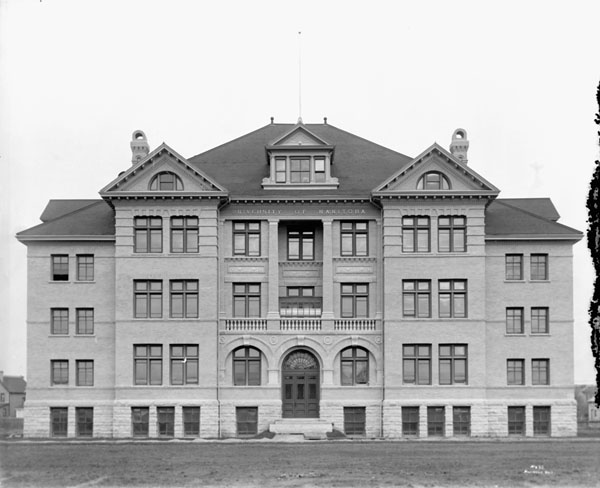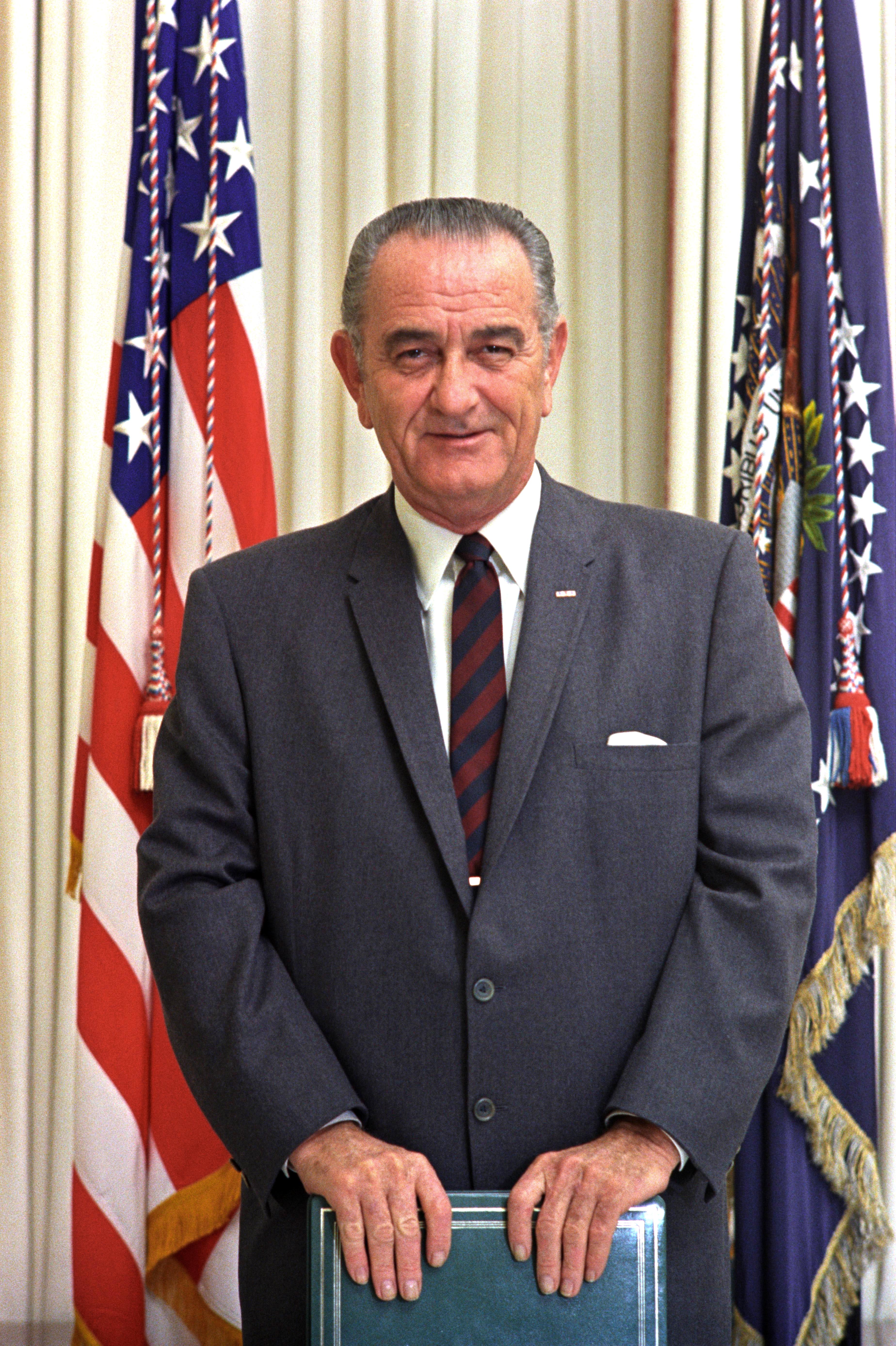|
Francis Lawrence Connors
Francis Lawrence Connors (November 14, 1891 - March 31, 1964), also known as Frank Connors, was a pharmacist and politician in Quebec, Canada. He was a Liberal Party member to the Legislative Assembly of Quebec from 1935 to 1942 and was a member in both Godbout governments. Biography Francis Lawrence Connors was born in Ottawa, the son of Edward John Connors and Esther Moylan. He studied at the universities of Ottawa, Toronto, Manitoba and Saskatchewan. He married Irène O'Connell in St. Patrick church in Montreal June 8, 1921. He exercised his profession of pharmacist-chemist in Montreal. Connors was elected as a Liberal Party member to the Legislative Assembly of Quebec in the electoral district of Montréal–Sainte-Anne in the Quebec general election of November 25, 1935. June 27, 1936, premier Adélard Godbout appointed him as a minister without portfolio in his first government. In the Quebec general election of August 17, 1936, Connors was reelected in his distric ... [...More Info...] [...Related Items...] OR: [Wikipedia] [Google] [Baidu] |
Legislative Assembly Of Quebec
The Legislative Assembly of Quebec (French: ''Assemblée législative du Québec'') was the name of the lower house of Quebec's legislature from 1867 to December 31, 1968, when it was renamed the National Assembly of Quebec. At the same time, the upper house of the legislature, the Legislative Council, was abolished. Both were initially created by the Constitution Act, 1867. It was the Union Nationale government of Premier Jean-Jacques Bertrand that passed the "Bill 90" legislation to abolish the upper house, but earlier attempts had been made by earlier governments. The presiding officer of the Assembly was known in French as ''orateur'', a literal translation of the English term, '' speaker''. When the Assembly was renamed so too was the title of its presiding officer, becoming known as the President. Today, Quebec has a unicameral legislature, whose single house is the National Assembly. The large chamber that housed the assembly is also known as ''le salon bleu'' (t ... [...More Info...] [...Related Items...] OR: [Wikipedia] [Google] [Baidu] |
University Of Manitoba
The University of Manitoba (U of M, UManitoba, or UM) is a Canadian public research university in the province of Manitoba.''University of Manitoba Act'', C.C.S.M. c. U60. Retrieved on July 15, 2008 Founded in 1877, it is the first of . Both by total student enrolment and campus area, the U of M is the largest university in the province of Manitoba and the 17th-largest in all of Canada. Its main campus is located in the |
1964 Deaths
Events January * January 1 – The Federation of Rhodesia and Nyasaland is dissolved. * January 5 - In the first meeting between leaders of the Roman Catholic and Orthodox churches since the fifteenth century, Pope Paul VI and Patriarch Athenagoras I of Constantinople meet in Jerusalem. * January 6 – A British firm, the Leyland Motor Corp., announces the sale of 450 buses to the Cuban government, challenging the United States blockade of Cuba. * January 9 – '' Martyrs' Day'': Armed clashes between United States troops and Panamanian civilians in the Panama Canal Zone precipitate a major international crisis, resulting in the deaths of 21 Panamanians and 4 U.S. soldiers. * January 11 – United States Surgeon General Luther Terry reports that smoking may be hazardous to one's health (the first such statement from the U.S. government). * January 12 ** Zanzibar Revolution: The predominantly Arab government of Zanzibar is overthrown by African nationalist rebels ... [...More Info...] [...Related Items...] OR: [Wikipedia] [Google] [Baidu] |
1891 Births
Events January–March * January 1 ** Paying of old age pensions begins in German Empire, Germany. ** A strike of 500 Hungarian steel workers occurs; 3,000 men are out of work as a consequence. **German Empire, Germany takes formal possession of its new African territories. * January 2 – A. L. Drummond of New York City, New York is appointed Chief of the Treasury Secret Service. * January 4 – The Earl of Zetland issues a declaration regarding the famine in the western counties of Ireland. * January 5 **The 1891 Australian shearers' strike, Australian shearers' strike, that leads indirectly to the foundation of the Australian Labor Party, begins. **A fight between the United States and Indians breaks out near Pine Ridge agency. **Henry B. Brown, of Michigan, is sworn in as an Associate Justice of the Supreme Court of the United States, Supreme Court. **A fight between railway strikers and police breaks out at Motherwell, Scotland. * January 6 &ndas ... [...More Info...] [...Related Items...] OR: [Wikipedia] [Google] [Baidu] |
Quebec Liberal Party MLCs
Quebec ( ; )According to the Canadian government, ''Québec'' (with the acute accent) is the official name in Canadian French and ''Quebec'' (without the accent) is the province's official name in Canadian English is one of the thirteen provinces and territories of Canada. It is the largest province by area and the second-largest by population. Much of the population lives in urban areas along the St. Lawrence River, between the most populous city, Montreal, and the provincial capital, Quebec City. Quebec is the home of the Québécois nation. Located in Central Canada, the province shares land borders with Ontario to the west, Newfoundland and Labrador to the northeast, New Brunswick to the southeast, and a coastal border with Nunavut; in the south it borders Maine, New Hampshire, Vermont, and New York in the United States. Between 1534 and 1763, Quebec was called ''Canada'' and was the most developed colony in New France. Following the Seven Years' War, Quebec beca ... [...More Info...] [...Related Items...] OR: [Wikipedia] [Google] [Baidu] |
Canadian Pharmacists
Canadians (french: Canadiens) are people identified with the country of Canada. This connection may be residential, legal, historical or cultural. For most Canadians, many (or all) of these connections exist and are collectively the source of their being ''Canadian''. Canada is a multilingual and multicultural society home to people of groups of many different ethnic, religious, and national origins, with the majority of the population made up of Old World immigrants and their descendants. Following the initial period of French and then the much larger British colonization, different waves (or peaks) of immigration and settlement of non-indigenous peoples took place over the course of nearly two centuries and continue today. Elements of Indigenous, French, British, and more recent immigrant customs, languages, and religions have combined to form the culture of Canada, and thus a Canadian identity. Canada has also been strongly influenced by its linguistic, geographic, and ... [...More Info...] [...Related Items...] OR: [Wikipedia] [Google] [Baidu] |
Notre Dame Des Neiges Cemetery
Notre Dame des Neiges Cemetery (french: Cimetière Notre-Dame-des-Neiges) is a rural cemetery located in the borough of Côte-des-Neiges-Notre-Dame-de-Grâce, Montreal, Quebec, Canada which was founded in 1854. The entrance and the grounds run along a part of Côte-des-Neiges Road and up the slopes of Mount Royal. Notre Dame des Neiges Cemetery is the largest cemetery in Canada and the third-largest in North America. History and description Created on property purchased from Dr. Pierre Beaubien, the new cemetery was a response to growing demand at a time when the old Saint-Antoine Cemetery (near present-day Dorchester Square) had become too small to serve Montreal's rapidly increasing population. Founded in 1854 as a garden cemetery in the French style, it was designed by landscape architect Henri-Maurice Perreault, who studied rural cemeteries in Boston and New York. On May 29, 1855, thirty-five-year-old Jane Gilroy McCready, wife of Thomas McCready, then a Montreal municipa ... [...More Info...] [...Related Items...] OR: [Wikipedia] [Google] [Baidu] |
1939 Quebec General Election
The 1939 Quebec general election was held on October 25, 1939, to elect members of the Legislative Assembly of the Province of Quebec, Canada. The Quebec Liberal Party, led by former premier Adélard Godbout, defeated the incumbent Union Nationale, led by Maurice Duplessis. This was Godbout's second non-consecutive term of office and his only victory out of four consecutive general elections opposing Duplessis. The Action libérale nationale, which had won 25 seats in the 1935 election and then merged with the Quebec Conservative Party, was re-formed by Paul Gouin, who had split with Duplessis soon after the formation of the Union Nationale. However the ALN obtained only 4.5% of the vote and no seats. It soon disbanded. Also, a rump Conservative Party ran three candidates who won 0.2% of the vote and no seats. This party also disbanded. Redistribution of ridings An Act passed before the election reduced the number of MLAs from 90 to 86 through the following changes: ... [...More Info...] [...Related Items...] OR: [Wikipedia] [Google] [Baidu] |
Union Nationale (Quebec)
The Union nationale () was a conservative and nationalist provincial political party in Quebec, Canada, that identified with Québécois autonomism. It was created during the Great Depression and held power in Quebec from 1936 to 1939, and from 1944 to 1960 and from 1966 to 1970. The party was founded by Maurice Duplessis, who led it until his death in 1959. The party was often referred to in English as the National Union, especially when it was still an electoral force, by both the media and, at times, the party. History Origin The party started when the Action libérale nationale, a group of dissidents from the Quebec Liberal Party, formed a loose coalition with the Conservative Party of Quebec. In the 1935 Quebec election the two parties agreed to run only one candidate of either party in each riding. The Action libérale nationale (ALN) elected 26 out of 57 candidates and the Conservatives won 16 seats out of 33 districts. Conservative leader Maurice Duplessis be ... [...More Info...] [...Related Items...] OR: [Wikipedia] [Google] [Baidu] |
1936 Quebec General Election
The 1936 Quebec general election was held on August 17, 1936, to elect members of the Legislative Assembly of the Province of Quebec, Canada. The '' Union Nationale'', led by Maurice Duplessis, defeated the incumbent Quebec Liberal Party, led by Adélard Godbout. This marked the end of slightly more than 39 consecutive years in power for the Liberals, who had governed Quebec since the 1897 election. This 1936 election had been called less than one year after the 1935 election after Liberal premier Louis-Alexandre Taschereau resigned because of a scandal. He was replaced by Godbout as Liberal leader and premier. This was Duplessis's first term in office. After losing the subsequent 1939 election, he later won four more general elections in a row, and became the dominant politician of his time. It was also the ''Union Nationales first election, having been formed from a merger between the '' Action libérale nationale'' and the Quebec Conservative Party. Results , - ! ... [...More Info...] [...Related Items...] OR: [Wikipedia] [Google] [Baidu] |
Minister Without Portfolio
A minister without portfolio is either a government minister with no specific responsibilities or a minister who does not head a particular ministry. The sinecure is particularly common in countries ruled by coalition governments and a cabinet with decision-making authority wherein a minister without portfolio, while they may not head any particular office or ministry, may still receive a ministerial salary and has the right to cast a vote in cabinet decisions. Albania In Albania, ''"Minister without portfolio"'' are considered members of the government who generally are not in charge of a special department, do not have headquarters or offices and usually do not have administration or staff. This post of was first introduced in 1918, during the Përmeti II government, otherwise known as the Government of Durrës. The members of this cabinet were referred to as ''Delegatë pa portofol'' (delegate without portfolio). The name "minister" was used two years later, during th ... [...More Info...] [...Related Items...] OR: [Wikipedia] [Google] [Baidu] |




